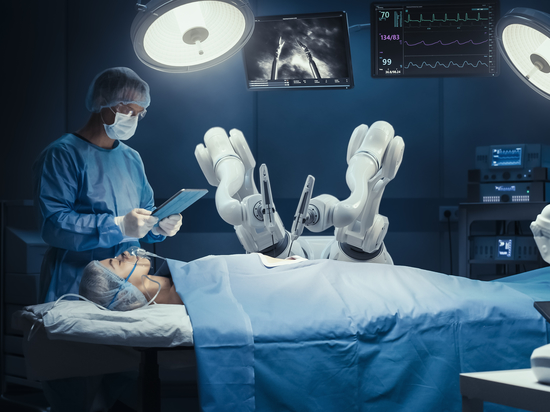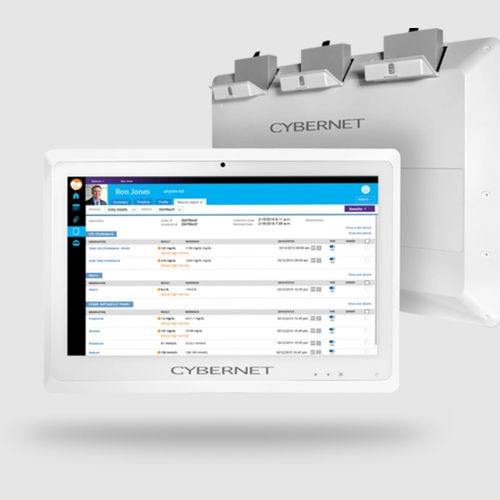
#Industry News
The Importance of Hospital Equipment Ergonomics
Ergonomics is an often-overlooked but critical aspect of hospital equipment and layout design.
Healthcare is a deceptively dangerous profession, with providers constantly threatened by everything from toxic chemicals to workplace injuries.
In navigating these challenges, integrating ergonomic principles enhances workplace safety, fostering a healthier and more efficient environment for healthcare professionals.
In this article, we’ll examine the most important ergonomic principles, and see how they can make your workplace a safer, healthier, and happier environment.
What is Ergonomics in Healthcare?
Ergonomics is the design principle that focuses on the health and well-being of the worker. A chair with good lower back support, for instance, is an example of good ergonomics.
Conversely, if a phone’s screen is consistently dim, flickers, and is so out of focus that users strain their eyes to discern the image, it exhibits poor ergonomics.
Ergonomics plays a pivotal role in healthcare, benefiting both providers and patients. Given the long and demanding work hours of healthcare providers, maintaining energy levels for patient care is essential. Uncomfortable equipment or injuries resulting from its use can diminish this energy.
In addition, effective ergonomic design facilitates a seamless recovery process for patients who are grappling with injuries or illnesses. Any form of stress or discomfort can impede patients’ recovery, potentially increasing the recurrence of their injury or condition.
Modern trends in ergonomics often focus on comfort and posture while using a computer, given how important they are in offices worldwide. This includes encouraging proper posture, adjustable desks and chairs, and adequate support for the arm and wrist while typing to prevent carpal tunnel syndrome.
The future of ergonomics will likely see more usage of automation technology, such as mechanisms that can lift and lower hospital beds automatically.
The Importance of Ergonomics in Hospitals & Healthcare Settings
As we mentioned prior, healthcare providers must deal with numerous physical and mental challenges in their work. Healthcare groups must provide their employees with resources that help them overcome these challenges.
Physical Strain and Musculoskeletal Disorders
In 2019, U.S. hospitals recdored 221,400 work-related injuries or illnesses, with a rate of 5.5 injuries for every 100 full-time employees. This puts healthcare at twice the rate for private industry
Musculoskeletal disorders are a prevalent focus of ergonomics, addressing physical conditions within an individual’s skeleton and muscles often induced by their work environment. These disorders encompass issues like back pain and carpal tunnel syndrome.
Sprains and strains are the most common of these injuries, making up more than 50% of all healthcare provider injuries.
The most common cause of worker injuries is overexertion, such as excessive lifting, bending, or reaching. A frequent scenario is transferring patients from one bed to another without proper support or technique, resulting in healthcare workers overexerting themselves and sustaining injuries.
Other typical causes of injury in healthcare include contact with hazardous materials and falls.
Mental Well-Being and Job Satisfaction
Another critical aspect of ergonomics is how it impacts mental health and happiness. Unfortunately, this is an area where the healthcare sector desperately lags behind.
In 2022 alone, 46% of health workers reported feeling burnt out or exhausted. Similar negative feelings were reported for parameters like trust in management, workplace productivity, and turnover intention.
Proper ergonomic procedures can help alleviate these feelings of exhaustion and frustration. The connection between physical and mental health is well-documented. Workers who are physically healthy and protected from workplace accidents are less likely to feel stressed out or overwhelmed.
By that same notion, an employee who suffers a sprain due to a lack of resources or support from their employer is far more likely to feel like their management doesn’t care about their well-being.
Ergonomics is also key to reducing employee stress by negating the need for constant repetitive tasks that lead to annoyance and discomfort. Having to constantly kneel down or reach for work supplies
Tips for Designing Ergonomic Healthcare Spaces
There’s no one-size-fits-all solution for healthcare ergonomics, as every hospital and every patient will have different needs. However, there are three primary areas that healthcare groups can focus on to see improvements: equipment, procedures, and facility layout.
Equipment
Healthcare staff often spend long shifts on their feet and on the move. For this reason, lighter, smaller equipment is often the first step to improving their workplace comfort.
For example, healthcare staff often use mobile workstations on wheels (WOW), with a PC hooked up to a power supply on the cart. This allows them to take a PC to perform tasks such as charting or dispensing medicine.
However, these power supplies are very heavy, which makes them difficult to push around during a shift. A better solution is a battery-powered PC on a non-powered computer cart, which is lighter and less taxing.
Additionally, because so much healthcare work involves staring at a monitor for extended periods, a medical-grade computer with an anti-glare filter can prevent eye strain while giving providers a clear view of on-screen information.
Adjustable equipment is another improvement to embrace. As staff members have different body shapes and heights, they will find different arrangements comfortable. Computer stands that can be raised or lowered prevent staff members from craning their necks, while adjustable furniture lets patients and staff find a configuration that works for them.
Another simple solution is automated adjustable beds, which can be raised and lowered without the need for staff. These beds not only reduce the workload on staff, but also give patients more control over their comfort.
Procedures
Good ergonomic procedures help protect staff from dangerous behavior or overexertion. Because the vast majority of healthcare injuries occur during physical stress, it’s important to avoid mistakes like awkward posture or not maintaining situational awareness while lifting heavy objects.
Embracing ergonomic procedures means understanding that ergonomics is not just a question of what tools you use but how you use them.
Properly training staff on high-risk procedures like transferring patients from a bed to a wheelchair or handling dangerous substances can prevent both repetitive stress injuries and sudden accidents.
Even simple measures like lifting with your legs and not your back and avoiding poor posture can significantly improve employees' safety and comfort.
Facility Layout
Ergonomic facility layouts focus on making the facility itself safe and comfortable to work in. Developing such a facility requires an open and healthy dialogue between administration and staff to determine priorities like workplace layout, equipment storage, and more.
Here are some examples of ergonomic layouts:
A good ergonomic layout for a nurses’ station will have all the equipment and consumables that nurses may need within easy reach without constantly kneeling or stretching.
If a cabinet stores supplies, the ergonomic solution is to put the most commonly used items front and center to be the easiest to access. You should also place heavier objects near the bottom so that they pose less of a falling hazard.
Wider hallways make it easier for multiple foot traffic lanes to exist without risking people running into each other, which is especially critical when moving high-risk patients.
Handrails in stairways and rooms for patients at risk of falling are a small addition but can be the difference between a scuffed knee and a broken hip.
Embracing Ergonomics with Cybernet’s Devices
Given the fraught relationships between healthcare groups and their staff, employers must always be looking for ways to make work less dangerous and less stressful.
By embracing ergonomic principles in the equipment they use and procedures they follow, healthcare groups can protect both employees and patients from injury and ensure better outcomes.
If your healthcare group is looking for medical-grade computers and tablets designed with ergonomics in mind, contact the team at Cybernet Manufacturing. We would be happy to review the ergonomic features of our devices, such as anti-glare filters, convenient battery placement, weight-saving design features, and more.





